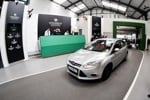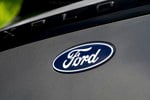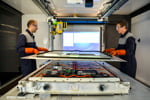All are considering an array of tactics that include launching sponsored retailer programmes, opening their own dealerships, encouraging existing retailers to open sites in adjacent territories and attracting new dealers to the network.
The investment requirement, franchise standards, margins offer and profitability potential vary immensely.
Dealers looking for growth need to weigh up the cost of investment and maintaining standards versus profit potential, add in the level of support offered by the manufacturer and deduct the level of interference and control.
The 10 manufacturers include established carmakers like Fiat, Alfa Romeo and Daihatsu as well as relative newcomers like Kia (in the UK since 1991) and Proton (1989).
For the ‘newcomers’, expansion is based on growth aspirations. Kia, for instance, wants to increase new car sales from 30,000 to 50,000 by 2010; parent company Hyundai is similarly ambitious – 32,000 to 70,000 by 2012.
Daihatsu intends to double UK sales to 10,000 by 2010 while Suzuki has laid out a strategy to grow from 34,000 to 50,000 within two years.
According to head of network development Paul Hunter, Kia’s main focus is moving existing dealers into new territories and attracting new ones to the franchise. Kia is also looking at a second wholly-owned dealership, this time in Manchester, and is considering launching sponsored retailer programmes.
Investment costs are “very sensible”, Hunter says, and include minimum standards of a five-car showroom with two sales staff, two technicians and two ramps.
“Return on investment depends very much on the specific case – some see a return within a year, some don’t,” he adds. Network return on sales for the first five months of the year averaged 1.6%.
Sponsored retailer programmes will be a major driver for Hyundai’s network growth.
It expects to sign up 20 over the next four years as its network grows from 145 to 180.
Hyundai has also developed a sponsored landlord programme where it buys land/premises and rents it to a dealer. Dealers interested in joining the franchise should consider the rising average network return on sales, currently 1.1%.
Sister brands Fiat and Alfa Romeo have reorganised their networks on a number of occasions, usually in the face of poor showings in consumer studies from JD Power and others.
Both have seen sales fall in recent years, but with new models and new, larger retail networks they believe they can recover lost ground.
Alfa Romeo, which is looking to more than double sales from 7,355 last year to “a minimum of 15,000” in 2010, has the smaller network, 43 dealers. It hopes to appoint 11 outlets by the end of the year.
Showroom investment
Existing partners and new dealers looking to join the network will need to invest in a showroom of at least 180sq m (1,938sq ft), a dedicated sales team and a minimum of three workshop bays and three technicians, excluding apprentices.
Fiat is still in the midst of reorganisation; it expects to cut 20-30% of its current 164 dealers while still expanding the network to 200 by 2010.
It means that up to 85 retailers might be needed for full representation – some will also fill gaps in Alfa Romeo’s network.
The enticement, says Fiat, is its plans to grow sales from just under 60,000 to 100,000 by 2010. That would be a new UK record.














Login to comment
Comments
No comments have been made yet.